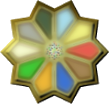To move the pins, click on the chart; pins can be dragged by holding the left mouse button down when moving the pointer. The time can be fine-tuned using the left and right arrows on the keyboard, then generating the results by pressing the return key.
Personalise your forecast
While much information can be gained from knowing the relative strengths of the ten ƘčĊŴĎĈŌČāŷ Öicuirac [ʷɔɪ.ʃʊə.ræʃ] – Elements – at any given time, a more detailed reading can be obtained if you enter the date (and time) of your ijčĈŪĎĈŌČĈ guesuiru [gʌ.sʊə.rʊ] – First Breath (birth).
The Vreski people believe that when a person takes their first breath, the relative strengths of the ten elements is imprinted into their spirit and flesh. By this action, we are each given our own (almost) unique spectrum of elemental levels which determine our potential abilities, and our personality, for the rest of our lives.
Interactive wards forecast chart
You can use this chart to determine the relative flux of the elements for any given time over the next few days. With this information, you can then prepare a suitable ƉČĀžďĆƈČĈ áqoohu [ʰæ.qū.hʊ] – Ward – to help protect yourself from the ƍČăŷĐČāŷ lecpec [leʃ.peʃ] (Sprites) that are most likely to take an interest in you at that time.
Ward requirements for:
—







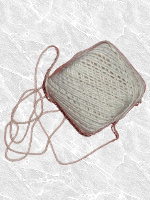

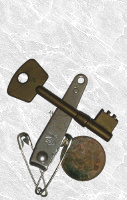




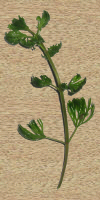

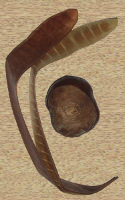
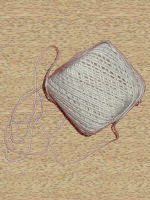


Sprites to ward against
Apologies – we are not able to supply details of dangerous sprites at this time.
What are sprites?
The Vreski mystics have a generally paranoid outlook on life. The world is, in their view, definitely out to get them – mainly in the form of ƍČăŷĐČāŷ lecpac [leʃ.pæʃ] Sprites: tiny, undetectable, bane-laden motes swarming through the airs, waters and soils of the world, seeking out people to harrass and infect. As an element becomes more External, the sprites associated with that element become more dangerous.
If you do fall victim to a sprite, don't try to build a ward to help you get better – it's too late for that! Wards offer protection, not cures. If you're feeling lost, talk to friends; if you're unwell, visit your doctor.
The Vreski mystics say there are thousands of different kinds of sprite in the world, some more dangerous than others. Each sprite is associated with combinations of particular elements (and also geography, time of day, seasons, weather conditions, sounds, and much else).
There are three main groups of sprites:
- ƍČăŷĐĎćŭƍČāŷ Lecpaoslac [leʃ.pɔs.læʃ] — Fiends forment more social troubles: they are the instigators of arguments, infatuations and social unrest;
- ƍČăŷĐČĂĸČĂƃČāŷ Lecpemeqjac [leʃ.pe.me.χæʃ] — Scamps cause mental and emotional imbalances in the individual, and in the family; while
- ƍČăŷĐČĆŴďĀŠČāŷ Lecpocaatjac [leʃ.pɒ.ʃɑ.tʲæʃ] — Imps, the most physically 'present' of the sprites, are responsible for physical ailments.
To help them avoid the most prominent threats, the Vreski common-folk wear an ƉČĀžďĆƈČĈ áqoohu [ʰæ.qū.hʊ] (Ward) about their body. They build their daily wards from a collection of odds and ends – feathers, bones, stones, scraps of cloth, coloured ribbons and the like. The best wards are self-constructed and pinned to the most appropriate area of the body as people go about their daily business.
The reason for building wards is simple. While the flux of elements at the time of your birth can offer you some built-in protection against sprites, that protection is not complete, nor foolproof. For added protection, you need to construct a daily ward against the sprites most likely to pay attention to you during the day – the materials to include in your ward can be calculated by combining your natal element levels with the current flux of elements.
Öicuirac óki – The ten Elements
According to the Vreski mystics, ten ƘčĊŴĎĈŌČāŷ Öicuirac [ʷɔɪ.ʃʊə.ræʃ] – primaeval nets, or Elements – form the knit and weave of the universe. But unlike the elements of the scientists, these elements are not real; rather they form the potential of the world and all life within it.
Each element follows its own rhythmic cycle, moving from śĎĈśčĂŖČĀ Vuiveefa [vʊə.vī.fæ] – the wild place, External – to ŵƏČĂĐčĂŖČĀ Clepeefa [ʃle.pī.fæ], the tamed place, Internal, and then back again, like the ebb and flow of the tides.
Clepeefa is the realm of order, stasis, entropy; Vuiveefa is the realm of chaos. Neither realm is better than the other. Each realm requires the other to function, for without chaos there can be no order, and without order there can be no chaos. Where the borders of chaos and order meet and mix, so develops ĮČāŔĸČĀ ƢČāƐ ĐČĀŰƣČĄūĺČĀ ƢČāƐ ūĒčĈŪČĀ Karjma âl Pazyisma âl Spuesa [kæɹ.mæ ʲæl pæ.zjɪ.smæ ʲæl spʌ.sæ] — Life, and Thought, and Spirit
In a person's chart – either predictive or natal – the more Internal an element, the more control they will have over the attributes of the element; the more External it is, the more likely that the element will have control over them. Knowing when to make use of an element's attributes (knowledge), and when to let the element steer them (intuition), can greatly enhance a person's sense of peace and serendipity.
The domains of the Elements
Elements are said to form natural pairs or ĕčąƐğČĆĸČĀ Bieldoma [baɪl.dɒ.mæ] – Domains. The relative strengths of these domains at the time of a person's first breath can be used to help predict their personality.

Qaasla and Dxeva (Air and Radiance) combine as ĕČăĶśČĆƦČĆĸČĀ Begvostoma [beg.vɒ.stɒ.mæ] – the domain of the Above. The skies above us are in a state of constant change: day becomes night and then day; the clouds form, change and disperse. Even those constants – the sun, the moons and planets, the stars – refuse to stay still. Begvostoma is an immediate place, the domain of action and reaction. But it is also a place of cycles and repetitions; when a person looks up to the skies, they can guess what's likely to occur in the next few minutes or hours.
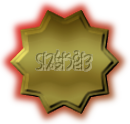
Hepta and Drjelja (Fire and Smoke) are paired together as ĕČăŭĐčĈŪČĀ Bespuesa [bes.pʌ.sæ] – the domain of the Spirit. This is the realm of the individual: each of us is born into this world alone; each of us draws a unique path through the web of the world, gaining and losing friends and family members, learning our own lessons, facing our own individual challenges and threats. In Bespuesa we find creativity, and inspiration; from this domain we harvest great art and great thought, our most basic ideals and beliefs.
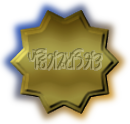
Maha and Luexna (Water and Clay) form ĕČăıĤČăřĚČĆĸČĀ Bektceftoma [bek.ʧef.tɒ.mæ] – the domain of the Around. We live in a world that changes and evolves, often in unpredictable ways. But Bektceftoma is also a world we can change and shape to meet our needs: fields can be carved out of forests, or forests replanted where fields used to exist. We build our homes and towns in the world around us, we make our friends and build our businesses here. Bektceftoma offers us a more pragmatic approach to life.
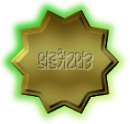
Kyopla and Koga (Wood and Bone) are twinned in ĕČĂŴ襜ČĀ Becieva [be.ʃaɪ.væ] – the domain of the Flesh. The realities of life may be harsh, but they can also be beautiful: it is our approach to life that determines our well-being and enjoyment of the world. Becieva is the domain of pleasure, and also of pain; to the Vreski mind one cannot be experienced without experiencing the other in due course. The flesh is the medium through which we experience the world: it represents life in all its glorious forms, but also death – for nothing lives forever.
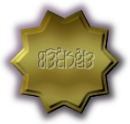
Yooka and Dxaevma (Rock and Metal) come together as ĕČĂŪČĈƦČĆĸČĀ Besustoma [be.sʊ.stɒ.mæ] – the domain of the Below. The land on which we live changes slowly – we barely notice the erosions of mountains. But change can also be sudden, violent and deadly: earthquakes, eruptions, tsunamis. Besustoma represents the domain of the philosophers; it is the place where our deepest, most constant thoughts and beliefs are formed and reformed. It is also the realm of the long endeavour: wealth, status and respect require hard, slow, constant work - yet these things can be so easily lost, just as the city falls when the earth shakes.
Within each domain, one of the elements is considered to be ĮČĂ žČĂĮČĄŹČĂ Ke Qekixe [ke qe.kɪ.ʒe] (Lighter) while the other is ĮČĂ ƢČĊĤČĄŹČĂ Ke Ôutcixe [ke ʲaʊ.ʧɪ.ʒe] – Heavier. The Ke Qekixe elements are: Qaasla, Hepta, Maha, Kyopla and Yooka. The relative balance of Ke Qekixe and Ke Ôutcixe elements is a something that many Vreski people take into consideration when preparing their wards.
Element descriptions
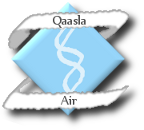
Qaasla – the element of Air
ƃďāŭƍČĀ — Qaasla [ɔ̄ɑs.læ]
Qaasla is the touch of the breeze, and also the punch of the tornado. Represented by the blue of the midday sky and the form of the feather, this element covers the lungs and breathing. It is also the element of smell. It talks of beginnings. Gratitude is the key emotion of Qaasla, though there is always the danger that gratitude can devolve into the more erratic impulses of adulation.
The children of the Air are quick creatures: quick to laugh and quick to cry. They live for the the moment and feel most at ease when dealing with the world as it happens, with little regard to planning ahead. The earlier they learn to take the needs of others into consideration, the better: those who gain a respect for the future and the past as well as for the now are both calmer people and better friends. But an Air child who loses touch with their sponteneity and intuition is likely to become morose, depressed even.

Dxeva – the element of Radiance
ĩČĂśČĀ — Dxeva [ʤe.væ]
Falling from the sky, the light of Dxeva rains down on us from the heavens. The wisp of hair strands, and the yellow colour of the sun, are representative of this element. Dxeva is the element of communication, the mouth and face, and taste. It represents endings – though an ending is also a new beginning, a change of direction or outlook. Such episodes can generate confusion which, in extreme states, can turn into anxiety.
The Radiant folk live for communication: other people fascinate them, and they are always eager to learn the latest news from their family and friends – and to let others know how they feel, too. They thrive in places where they can be the centre of the social network: to be excluded from such venues is torture to them. Forcing a Radiant child to be silent may lead to them losing trust in their abilities, turning them into painfully shy people; though with courage and determination such early setbacks can be overcome in later life.

Hepta – the element of Fire
ƈČăēĚČĀ — Hepta [hep.tæ]
Hepta is the dance of the candle flame, and the rage of the forest fire. Represented by red hues, and discarded husks or shells, this is the element of the heart, blood and thirst. It is also the element of the hearth, the centre of the home. Quiet pride is the emotion of Hepta, as is self-love and narcissism.
At the centre of any family will be a Fire child: it is their destiny to be the builders of safe homes and strong friendships. The people of the Flame are rightly respected as the holders of great wisdom; they make excellent teachers, happiest when helping others. But it is dangerous to take the Fire folk for granted: if they ever feel abused by others, their wrath can be fearsome to witness – few can survive their onslaught. Even so, the inferno rarely lasts long and is soon banked back, though the embers can remain warm for many seasons.

Drjelja – the element of Smoke
ĠœČĂƒČĀ — Drjelja [dɹe.ɫæ]
Drjelja, the billowing cloud, fascinates us with its dance, and kills us with its choke. Brown is the colour of this element, and leather its material. Drjelja represents the liver, and also fevers and chills; anger is its emotion, and rage. It is the element of exploration away from the hearth and home, of journeying and learning about ourselves.
The People of the Smoke are individualists to their core; they are fascinated by the processes of creativity and innovation, and are always keen to pursue their own dreams and aspirations. Just like their namesake element, they love to travel and explore. To teach a Smoke child to fear the world is a terrible crime, for without the opportunity to push beyond their horizons they will become become sullen and unco-operative, quietly undermining the efforts and aspirations of others.
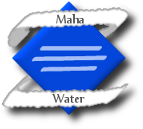
Maha – the element of Water
ĸČĀƈČĀ — Maha [mæ.hæ]
Dark blue is the colour of Maha; clear crystal is often used to represent the element. Water is shared between friends, and frendship is central to Maha's purpose and meaning. It is the element of the eyes and sight, and also intelligence. The questioning mind is the driving emotion, always investigating actions and situations.
Endurance and tenacity are the hallmarks of the Water folk: given enough time the river can carry the mountain to the sea. The Water folk enjoy the company of others, and when they work together they are capable of great deeds: resourceful and quick to assess any problem they encounter and immovable once they have decided on their course. If taught to distrust their peers when young, the Water child can stagnate and become unruly, wilful – as hard to predict as the stormy sea.
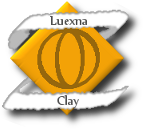
Luexna – the element of Clay
ƍčĈźĿČĀ — Luexna [lʌ.ʒnæ]
The orange of the well-tilled earth colours this element. Luexna encompasses the wider community; individuals may come and go, but the community continues. Hunger and satiety are its senses, alongside the emotion of negation and refusal – but also love: it has the control of the reproductive organs.
The children of the Clay are natural-born organisers, happiest when solving problems with their friends and colleagues. They take great pride in the achievements of their friends – which may at times lead them to sacrifice their own needs for the lesser needs of others. Should this happen too often, the Clay child can become resentful, even spiteful: they need to be given the opportunity to lead and teach their peers if only so they can remind themselves of their own worth. Despite their tendency to worry over small matters, the Clay folk are often the most admirable of people: without their support the community will soon collapse.
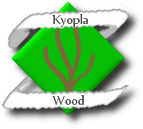
Kyopla – the element of Wood
įƣČĆđƏČĀ — Kyopla [kjɒ.plæ]
Kyopla includes not only wood, but also leaves and roots, flowers and seeds, and even the flesh of those creatures that feast upon the world's bounty. Often represented by twigs and leaves, this element's colour is green. It is responsible for the skin and nerves, and for the sense of touch. Joy is its emotion, and pleasure.
The Wood folk are rightly known as the happiest of people. They adore the world and glory in all it has to offer them. They are the setters of fashions and the seekers of pleasures, quick to influence their wide circle of friends to try something new. Even so, the children of the Wood do not appreciate sudden change: they need to see how the world is developing if they are to gain the best opportunities from it. No Wood person enjoys austerity, yet it is to their benefit to learn at an early age that not everything has been put on this world for their own pleasure: a mature Wood child appreciates that the sharing of pleasure is more joyous than experiencing the pleasure itself.
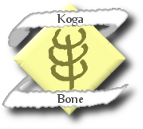
Koga – the element of Bone
ĮČĆijČĀ — Koga [kɒ.gæ]
Koga is the scaffold that support all living things. Taking the colour white as its emblem, more discerning people will substitute wool or cotton for the obvious bone in their daily wards. Overtly, Koga talks of death: it presides over the realm of pain. Sound is the natural sense of this element; surprise and shock are its gift.
The Bone people are filled with a love for the world that is so great that when they see the hurts and inequalities that are allowed to exist within the world, they rage. Typically the children of the Bone will swing between an idealistic ardour to save and cherish everything around them and a deep, depressive stoicism when they realise that not everything can be saved. Learning to balance these two conflicting demands at an early age will stand the Bone child in good stead, for once they find that balance they will discover a delight in small victories, good friends and appreciative families.

Yooka – the element of Rock
ơďĆĮČĀ — Yooka [jū.kæ]
Mauve Yooka is the surface on which we all stand; balance is its native sense. Yooka rules the stomach and digestive system. This is the element of social status, and the home for trades and skills. Yooka talks to posterity: sadness and depression are its key emotions.
The children of the Rock think deeply and see far. Their charisma is subtle, endearing and deep-rooted: those Rock people who choose to become leaders possess an ability to change the world in substantial ways. Yet most Rock folk prefer not to become great leaders, for their first love is to their craft – if encouraged from an early age the child of the Rock can become adept at any practical undertaking that takes their fancy. To deny them the opportunity to learn will bring trouble to the wider community, as they will have no problem leading their friends and followers into more disruptive, subversive activities.
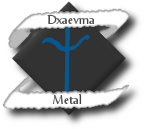
Dxaevma – the element of Metal
ĩčĀŜĺČĀ — Dxaevma [ʤeɪ.vmæ]
While metals may be shiny, the natural colour of Dxaevma is black. It controls the kidneys, bladder and colon – for every endeavour results in waste. The natural sense of this element is vibration: close to sound, yet often unheard, deeper. Fear is Dxaevma's emotion, and terror.
The Metal folk are fascinated by commerce and industry, and all the social drama that goes with it. They have an innate instinct for business and trade which can far exceed their educational level. They know risk, and have no fear of taking risks that most other people would back away from. The children of the Metal will choose their friends carefully and will gladly help others when help is needed – they plan for the long-term, and see friends as an investment as well as a joy. When forced to do things against their better judgment they may tarnish, and as they lose their shine so the metal child may delve deeper into the realms of fear, and terror. These people have long memories, and are not afraid to risk a friendship to make an important point.
Your birth chart character traits
The Gods in the Jungle
Buy the book
The Gods in the Jungle is available in both hardcopy and eBook formats from most major retailers on the website. Many venues – such as Smashwords and Lulu – let you sample the book before buying it.
You can read the first five chapters over at The Gods in the Jungle website, where you can also find a wealth of additional information about the Vreski Empire, the people who live there, and even the language (ijČĂśČĂ – Gevey) they speak.
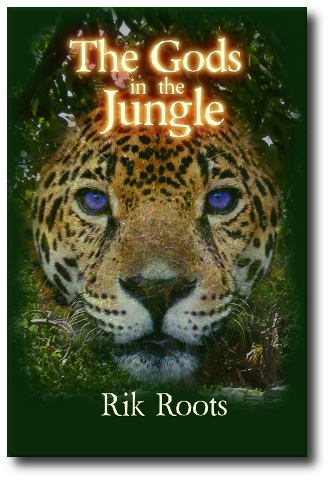
Hardcopy version – product details
Publisher: Rik's Sparky Little Printing Press
Printed and distributed by: lulu.com
Price: approx. £7.99 sterling + p&p
Page Count: 365 pages
Size: U.S. Trade (6" by 9"; 15cm x 23cm)
Binding: Perfect Bound
Interior Color: Black And White
eBook version – product details
Publisher: Rik's Sparky Little Printing Press
Distributed by: Smashwords
Price: us$2.99
ISBN 978-1-4523-0272-0
Available eBook reading formats:
Epub (open industry format)
Kindle (.mobi)
LRF (for Sony Reader)
Palm Doc (PDB)
